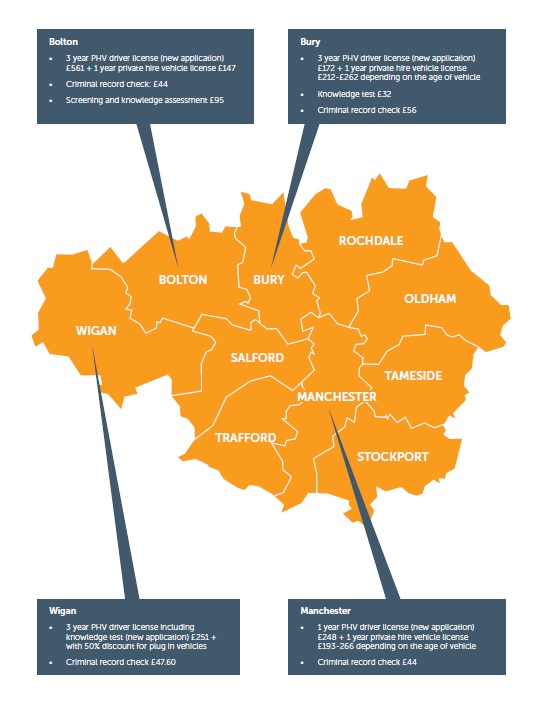Taxi! – Issues and Options for City Region Taxi and Private Hire Vehicle Policy
I have now been at UTG for 18 months and over that time I have been getting to grips and grappling with the complicated picture around taxis and private hire vehicles (PHVs). And it is COMPLICATED!
Our new report goes into much of the detail around the legislative and policy framework and makes the case for city regions to take a more strategic approach to this area. But I’ll break down some of the key points here. Firstly, there are taxis, legislatively known as hackney carriages, which may or may not be the black cab style. These can be hailed in the street or picked up at ranks, as well as booked. Then there are PHVs, sometimes known as minicabs, which must be booked, and cannot use ranks or be hailed on street. More recently, a series of app-based operators have emerged, sometimes referred to as Transportation Network Companies (TNCs), and these operate under PHV legislation. There has been huge growth in PHV numbers, associated with TNCs, with a 45% increase in PHV licences in the West Midlands over the last two years and there is now one PHV for every 100 people in London. So there are taxis, PHVs, TNCS which are kind of PHVs… Following? Then there is the question of who licenses these? In England, outside London, local authorities license taxis, PHVs, their drivers and operators. However, in our city regions, combined authorities often take strategic transport decisions. Therefore, within a combined authority region you can end up with different prices and policies in neighbouring authorities as the illustration below demonstrates. And these vehicles can operate wherever they like. This is further complicated by the fact that licensing officers are only able to conduct enforcement activities on vehicles licensed in their own area. 
In London, TfL are the licensing authority and the strategic transport body, which means that there are common standards across the city region. In addition, this means that the licensing regime can be used to help achieve wider policy goals, such as improving air quality by imposing emission standards on licensed taxis and PHVs. And the taxi and PH sectors can contribute to a number of public policy goals including:
- Social inclusion – taxis and PHVs are a vital lifeline to those with additional mobility requirements and often low income groups working shifts rely on taxi or PH when other public transport options are not available
- Air quality and carbon emissions – the taxi and PH fleet contribute to emissions but policy measures can be used to reduce their impact
- Congestion – large numbers of taxis and PHVs can contribute to traffic, but also reduce the need to own and use private cars, which could help reduce congestion
- Public safety – taxis and PH can help people get home at night when other public transport options might not be available, and this also supports the night time economy
- Employment – the taxi and PH sectors provide employment opportunities, with 367,000 people employed as drivers in England and Wales.
However, it’s not all rosy. New TNC models have been questioned over the ethics of their approaches, particularly with regards to workers’ rights. And rapid growth in PHV numbers has led to challenges for policy and decision makers. The legislation that governs the licensing of the taxi and PH sectors in England is from 1847 and 1976 respectively. This legislation needs updating to meet the current challenges in the sector. And city region transport authorities have the opportunity to take a more strategic approach to the taxi and PH sectors in order to allow them to contribute to wider public policy goals. Our new report sets out the case for this and you can find it here. We are also supporting the UITP Taxi Conference in London on 7th and 8th December, find out more and register here.

